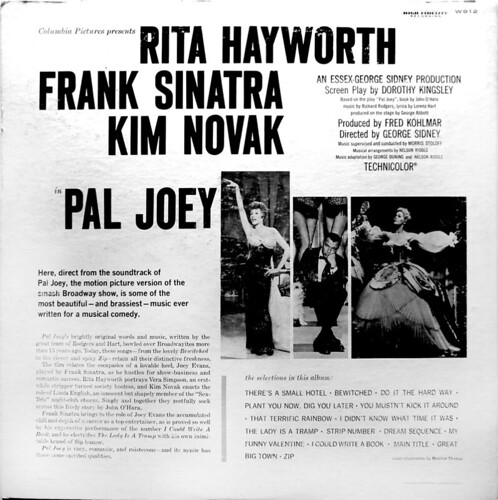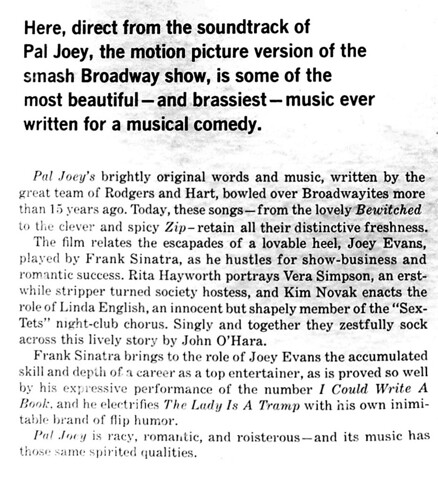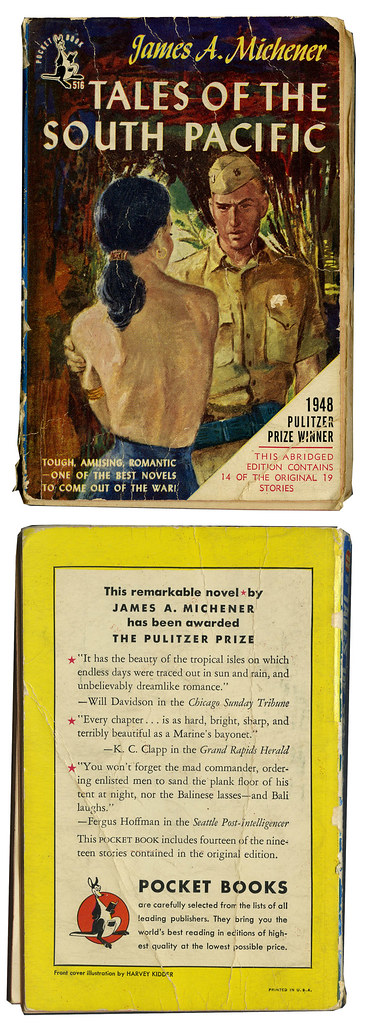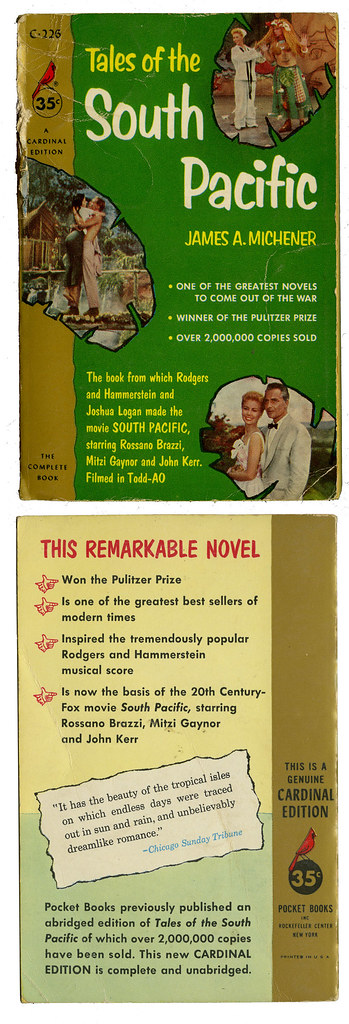This post relates to yesterday's post which relates, sort of, to my vernacular photography post. The thread runs through one of Gypsy Rose Lee's outfits. Actually it doesn't, but it made sense to me a minute ago. Now, not so much.
Yesterday's post was about Gypsy Rose Lee and a vintage paperback of the book she wrote that became the inspiration for the Broadway musical Gypsy. If you read any of the bio info about her you'll have seen this:
Trying to describe what Gypsy was (a "high-class" stripper), H. L. Mencken coined the term ecdysiast. Her style of intellectual recitation while stripping was spoofed in the number "Zip!" from Rodgers and Hart's Pal Joey, a play in which her sister June appeared.
Well, I give you Pal Joey. This is a recent 80 cent purchase at a thrift store. It's not in perfect condition, the first track skips a few times, but all 'n' all a decent listen with some great songs. I don't believe I've ever seen the movie. It's not scheduled for anytime this month so I'll just have to put it on my list of films to watch for.
Click on any image to see it larger.
Cover illustration by Maurice Thomas

So besides Gypsy, what else does this piece of ephemera have in common with some of my older posts? Okay, Sinatra is an easy one (here, here, and here). The other link has to do with the illustrator of this cover, Maurice Thomas. Though I cannot find any biographical information about him, I can find a few more pieces of work he did, including a cover for an A. A. Fair novel. A. A. Fair is Earl Stanley Gardner. If you've been here the past year you might remember the variety of Earl Stanley Gardner/Perry Mason books I featured. To see a Fair/Gardner cover illustration by Maurice Thomas click here. And to see two other pulp novel covers he illustrated click here and here. Here is a cover he did for a men's pulp magazine. And here is one he did of Jimmy Stewart for a movie poster.
And now, Rita Hayworth doing "Zip" from Pal Joey inspired by Gypsy Rose Lee's taking off her threads.

















